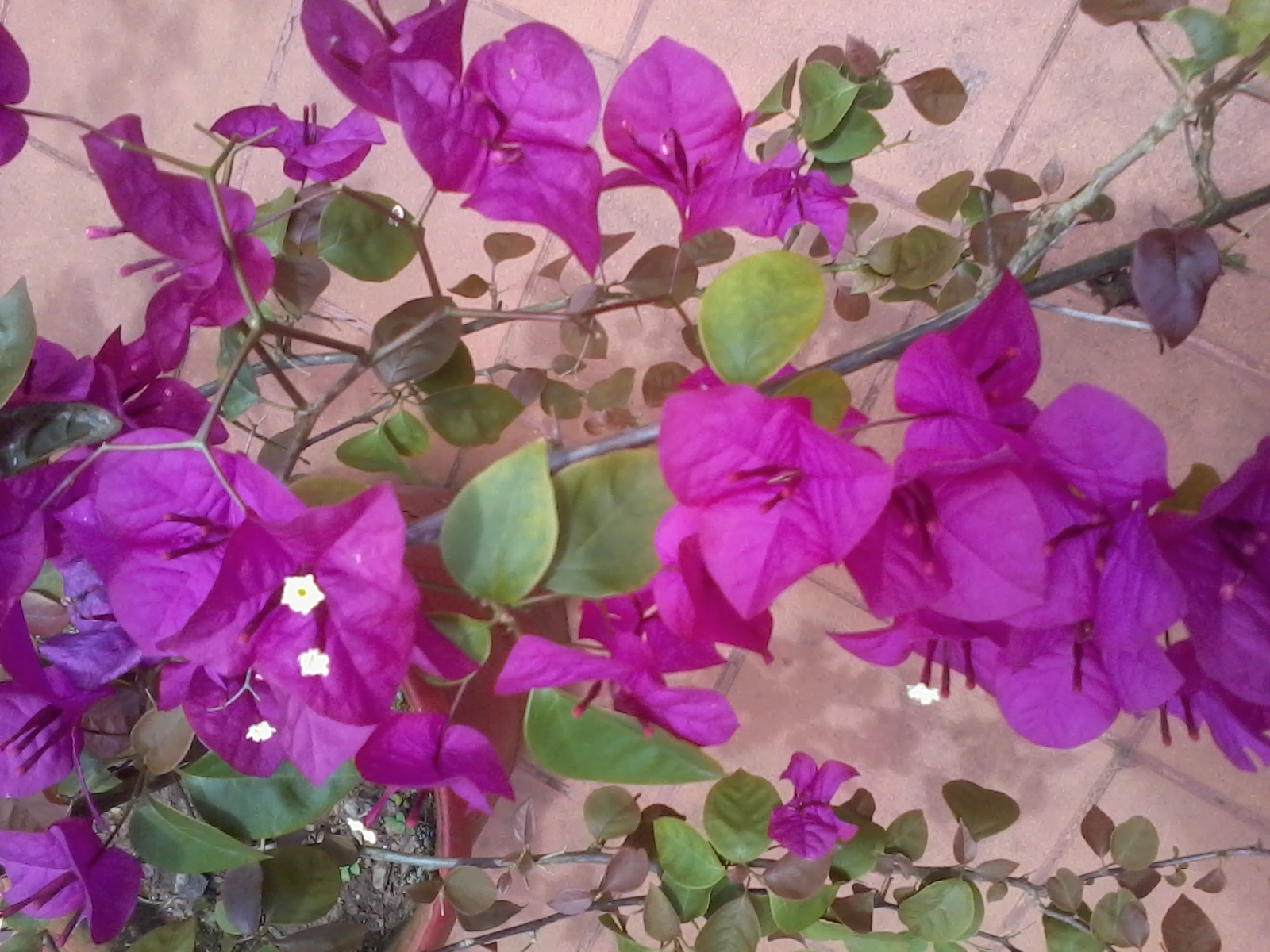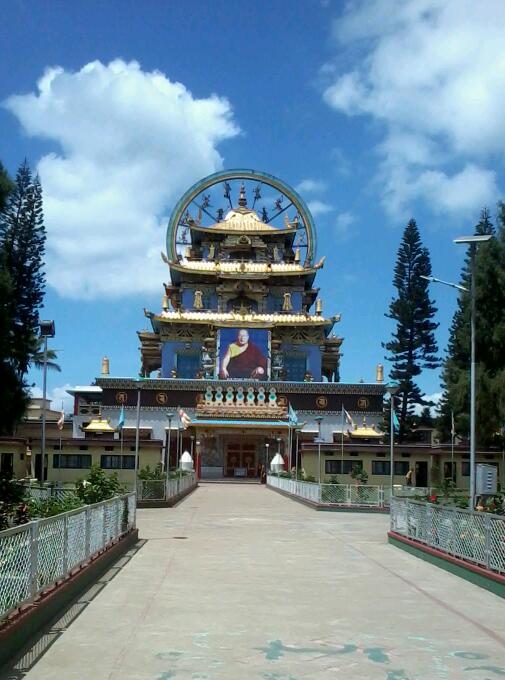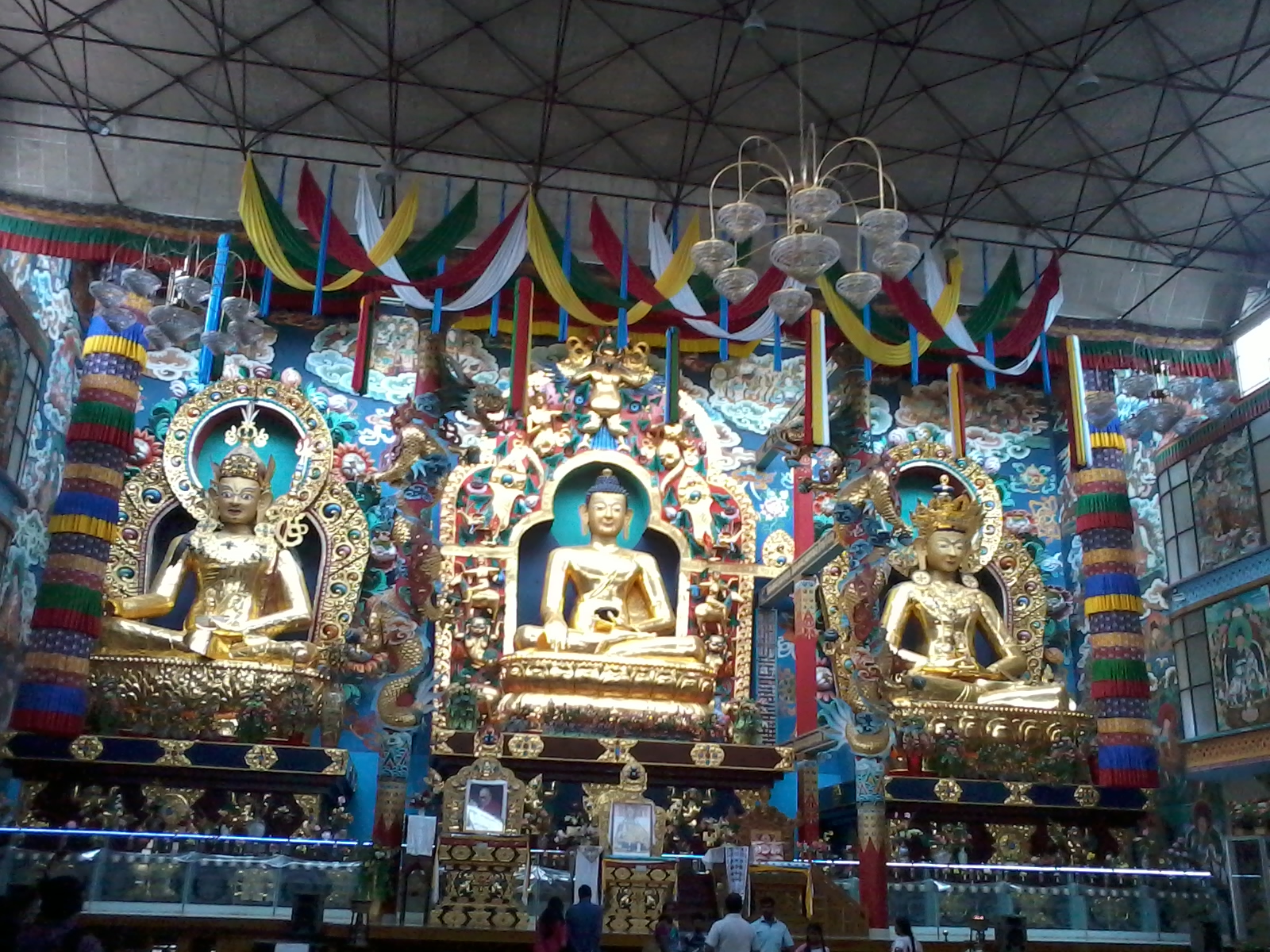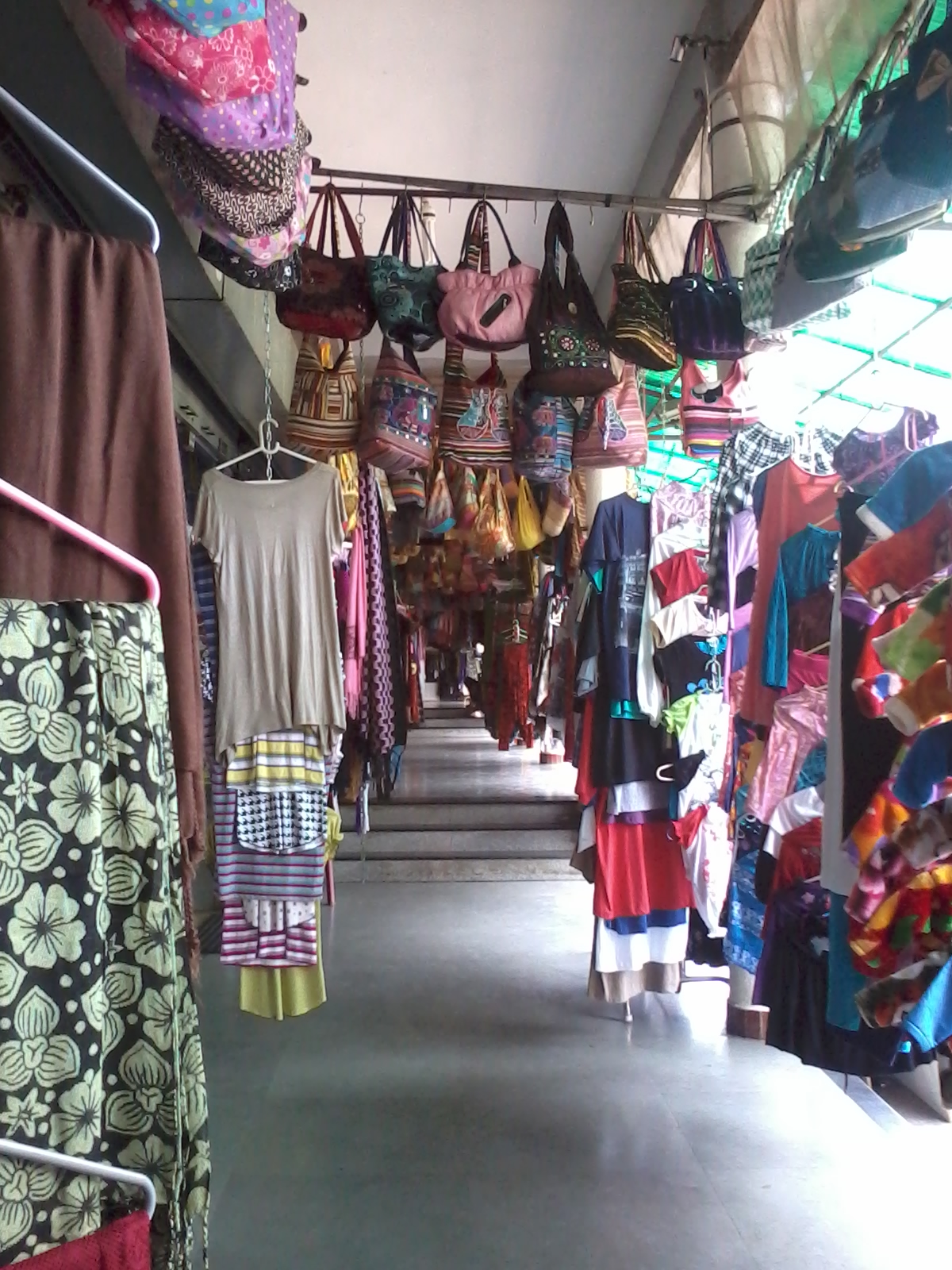Whoever has planted bougainvillae bushes right in the middle of the Bangalore- Mysore Highway has my vote. In the middle of dusty wilderness, driving past a splash of pink, white and green makes the heart sing. You also learn as you watch wild bushes on the side of the road thick with pink blossoms that if you leave the earth alone to do her thing, she will heal all the wrongs we heap upon her.
**
No matter which journey you are undertaking and where you are going, you will always see that in villages and in homes cut off from the so called civilisation, people are in far more harmony with nature than we are in big cities and towns. You will see humble homes with flowers growing out of every crevice, on every ledge and bursting from every kerchief sized garden patch. The connection to the earth is so visible when it is not interrupted by the trappings of progress.
But we were on the way to Coorg and it was a given that we visit a sprawling Tibetan settlement at Bylakuppe (near Kushalnagar) on the way so we did. The settlement is a geometric study in order and harmony with intersecting lines of camps and assorted buildings flowing towards the Namdroling Nyingmapa Monastery, the largest teaching center of Nyingmapa – a branch of Tibetan Buddhism.
Tourists usually end up going to the Padmasambhava Buddhist Vihara” (known simply as “Golden Temple”) and the energy here instantly plucks you out of your gridlocked brain and brings you face to face with silence, with murals painstakingly painted over years, spectacular meditative statues gleaming with golden peace and flowers beds with geese walking around as if they belong and you don’t. You will also see cherubic monks in prayer, in the flow of rituals and discipline that we know nothing of. But also zipping around on bikes, plugged into technology and perhaps aware that the world cannot be blocked completely but must be looked at, studied and negotiated with.
It is clear however that few tourists know the protocol of being in spiritual places. Be it big groups or small clusters or couples, the decibels are too loud, the cameras intrusive and the playful monkeying around, rather inappropriate.
A compact market in the settlement shows that the individualism of Tibetan arts and crafts is now adapting to what casual shoppers want so in most of the shops here, you can see cheap Chinese knockoffs (yes, the irony), blockprinted skirts and tops and jewellery that for most parts, lacks the finesse of handcrafted pieces that I remember picking ravenously in McLeod Ganj. I did pick up some lovely and affordable wall hangings and prayer flags. Do also check out the lovely tea sets and pottery, incense packets and if you have the patience, go deep in the small, overstuffed shops and expect to stumble upon something rare and precious.
**
My son insisted on eating in a restaurant where a monk manned the counter. We went inside hoping to taste some Tibetan treats but the menu only listed North Indian and South Indian staples. So we asked the waiter if there was anything that could be termed as purely Tibetan. He looked lost for a moment and then said, “Momos? And noodles with soup?”
**
So that is what we had with a Nadeem Sharavan song playing in the backdrop. The Indo-Chinese flavours and the touristy noise and begging kids outside and the refrain, “Tu shayar hai..main teri shayri,” reminded once again that when two distinct cultures blur into each other, it is hard to distinguish where one begins and the other ends. And if it is with a sense of resignation that an evicted culture like an uprooted plant tries to connect with a hospitable but unfamiliar earth or is it the need to survive that prods it to grow new roots.
To be continued..
**
This road trip was courtesy http://plantationtrails.net/
**










